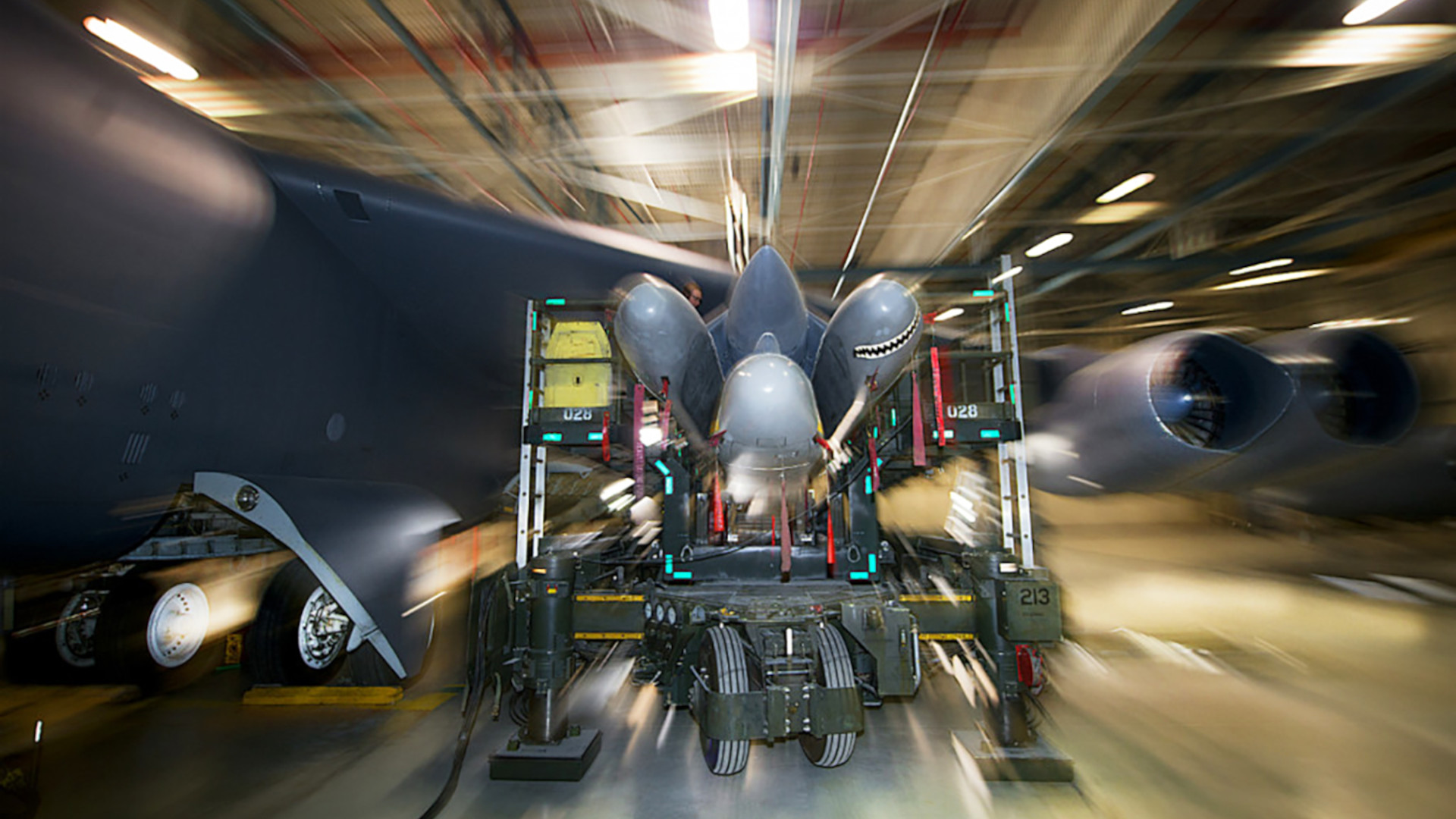The U.S. Air Force has conducted at least nine flight tests of prototypes of its future nuclear-tipped AGM-181A Long Range Stand Off cruise missile, or LRSO. This includes a test where a prototype missile successfully flew by itself along a set route while loaded with a special test article designed to act as a surrogate for a live W80-4 nuclear warhead.
Details about the LRSO flight testing milestones were included in a 2022 Selected Acquisition Report (SAR) for the program, as well as other reports earlier this year. Air & Space Forces Magazine was the first to report on the information from the SAR, which is dated December 2022, but that the Pentagon only released last month.
The Air Force announced in 2020 that it had chosen Raytheon to develop the AGM-181A, which is now set to replace its nuclear-armed AGM-86B Air-Launched Cruise Missiles (ALCM). Details about the LRSO’s design remain limited, but it is a member of the larger Long Range Strike (LRS) family of systems that also includes the B-21 Raider stealth bomber. LRSO will be highly survivable, including having a stealthy airframe, and it is possible that its range may be significantly greater than its predecessor. The ability to communicate with the launch platform and other command and control assets, and the ability to sense threats in its environment and avoid them are also real possibilities, existing already on other conventional cruise missiles.

“LRSO conducted nine successful major flight tests demonstrating the LRSO’s ability to: 1) safely separate from the B-52H aircraft; 2) Weapon flight surface deployment, engine operations, and flight control actuations; and 3) Capture controlled flight after employment from the B-52H aircraft,” according to the SAR. The B-52H is set to be one of the two delivery platforms for the AGM-181A, the other being the future B-21 Raider stealth bomber.
Though the Pentagon’s 2022 acquisition report describes all nine of the test events as flight tests, only a portion of them actually involved missiles flying on their own. There were also a number of so-called captive carry sorties, where the missile remained on the aircraft carrying it the whole time. This is done to make sure there are no safety or other problems stemming from just loading it onto its launch platform and flying it in position. There were unpowered release tests, as well, to demonstrate that the missile could separate from the aircraft onto which it was loaded without issue.
“The testing in CY [calendar year] 2022 culminated in four successful powered-flight tests, including a Controlled Test Mission (CTM-1) that demonstrated maturity of the design, associated manufacturing processes, and the navigation system performance,” the 2022 SAR for LRSO adds. “CTM-1 demonstrated safe missile separation from the B-52, missile flight control deployment, engine start and extended range operation, warhead-arming flight discrimination events, collection of flight environment and fire-down sequence data for the warhead, and advanced navigation along a mission planned route using an operationally relevant Mission Data File. All test objectives were met.”
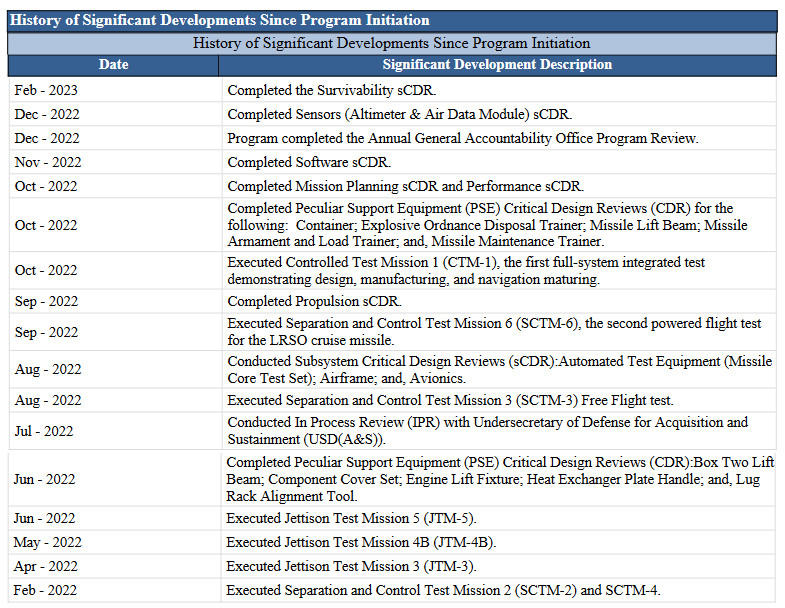
No mention is made of how many unsuccessful flight tests there may have been.
“Current calculations indicate that when four or more stores are loaded on the rotary launcher [in the B-52’s bomb bay], the stores clash with the fuel tank,” the report does note. However, the “risk is fully mitigated and closure is pending receipt of final documentation. Projected closure: May 2023.”

“Nuclear Safety Cross Check Analysis (NSCCA) must be in place to support timely nuclear certification of LRSO software,” it also says. Mitigation plan in place and on track. Projected closure: June 2023.”
The CTM-1 flight test, which took place in October 2022, was actually previously disclosed in a report from the Government Accountability Office (GAO), a Congressional watchdog, back in June. However, GAO did not expressly describe it as a flight test at that time, saying only that “the program tested a system-level integrated prototype in October 2022.”
The Department of Energy’s National Nuclear Security Administration (NNSA) also disclosed details about LRSO flight testing in its most recent Stockpile Stewardship and Management Plan, which was released in April. That report further added the missile involved in one test, very likely CTM-1 based on the accompanying details, was loaded with a special test version of the W80-4 nuclear warhead.
“The LRSO and W80-4 Life Extension Program joint test teams completed the first powered flight test of a LRSO Cruise Missile with W80-4 Warhead released from a B-52 aircraft. The missile successfully released from the aircraft, powered its engine, and executed all in-flight maneuvers,” according to NNSA. “A Lawrence Livermore National Laboratory (LLNL) and Sandia National Laboratories (SNL) team developed the warhead test asset, an Environmental Test Unit. The Environmental Test Unit successfully executed all pre-arm/pre-release criteria and collected environmental data for the duration of the flight. This is a significant milestone for the joint program and first collection of representative LRSO free flight data, used to populate the W80-4 STS [stockpile-to-target sequence], define environmental specifications, inform design decisions, and validate computational models.”
Details about this test unit are scant, but there are no indications that it was a live warhead. “Environmental Test Unit 1” is “an instrumented test asset that provides captive carriage environmental data for warhead qualification,” Sandia National Laboratories said previously about a similar-sounding W80-4 test article.
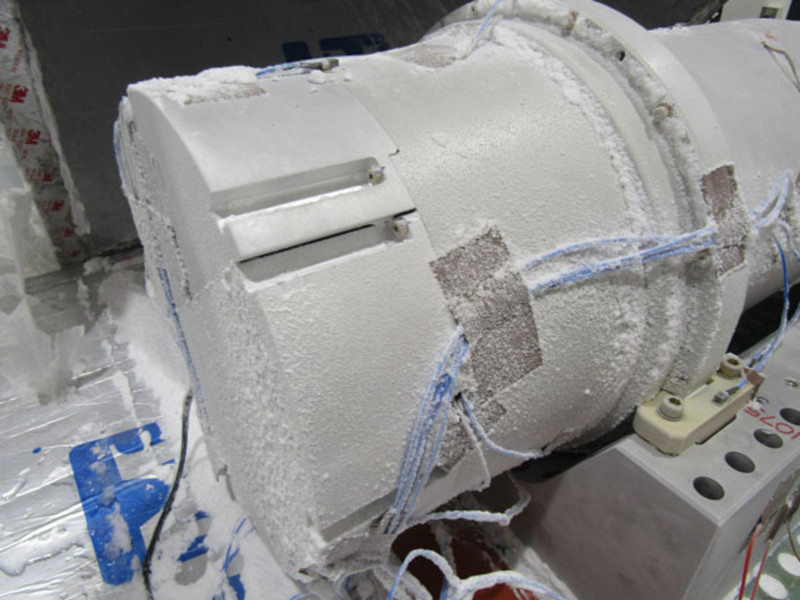
The Air Force’s current AGM-86B nuclear cruise missiles are armed with W80-series warheads. Versions of this warhead were also found on the now-retired air-launched AGM-129 Advanced Cruise Missile (W80-1) and nuclear-armed and the sea-launched BGM-109A Tomahawk Land Attack Missile-Nuclear (TLAM-N; W80-0).
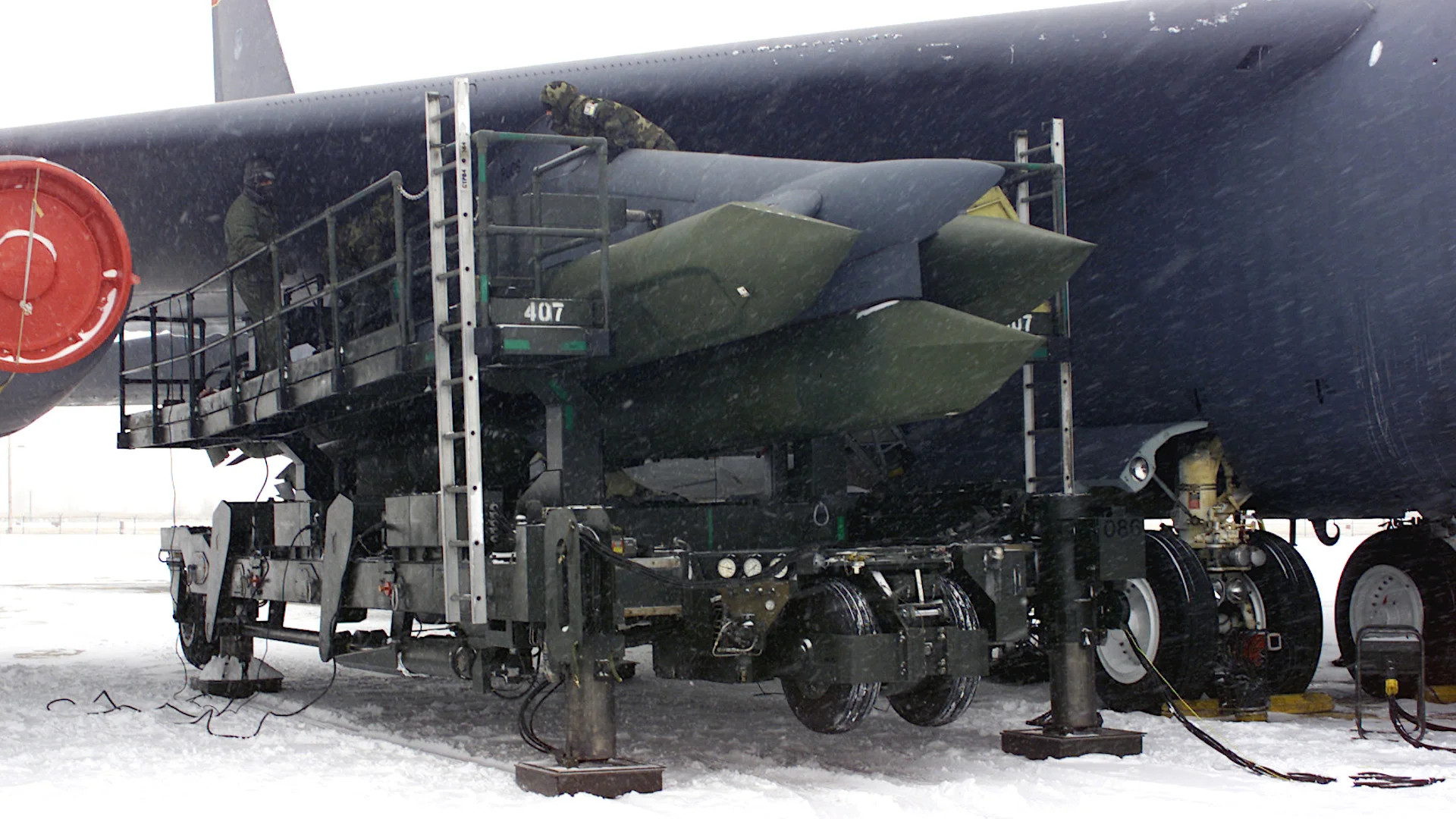
The older W80-0/1 warhead designs are so-called dial-a-yield designs, reportedly with two settings, five kilotons and 150 kilotons. The W80-4 effort is described as a Life Extension Program (LEP) that involves refurbishing and modernizing existing W80-1 variants.
“The W80-4 LEP will… enhance safety, security, and reliability,” according to NNSA. “Key design requirements of the W80-4 include use of the existing insensitive high explosive design, incorporation of modern components and safety features, extensive use of non-nuclear component technology developed for other LEPs, and parallel engineering with the USAF on the warhead-missile interface.”
The W80-4 warheads are not expected to have different yield options than their predecessors.
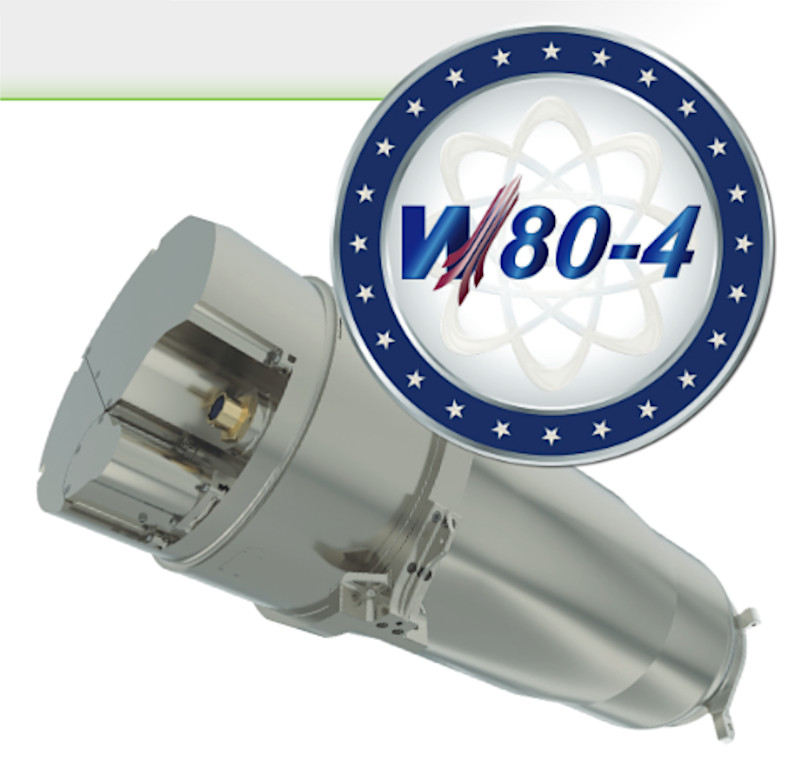
As it stands now, the date for when the Air Force expects to achieve initial operational capability with the LRSO is classified. A decision about whether to begin low-rate initial production of the missiles is expected in 2027.
LRSO entering service will be dependent, at least in part, on the availability of W80-4 warheads. For its report in June, DoE told GAO that it did not expect to mature all the relevant technologies for those warheads until Fiscal Year 2025. As of May, NNSA said it expected to deliver the first production W80-4 in 2027. Its April report added that “the W80-4 LEP is on track to support fielding the Air Force’s scheduled LRSO cruise missile initial and final operational capability dates.”
The Pentagon acquisition report does peg the estimated LRSO program acquisition cost, as of December 2022 and based on the expected purchase of 1,020 missiles in total, at just over $16 billion. Sustaining the missiles over a 30-year lifespan is expected to cost another $7 billion or so.
What we do know now is that the LRSO flight test program has been very active and successful, putting the Air Force ever closer to fielding its next nuclear-armed cruise missile.
Contact the author: joe@thedrive.com
